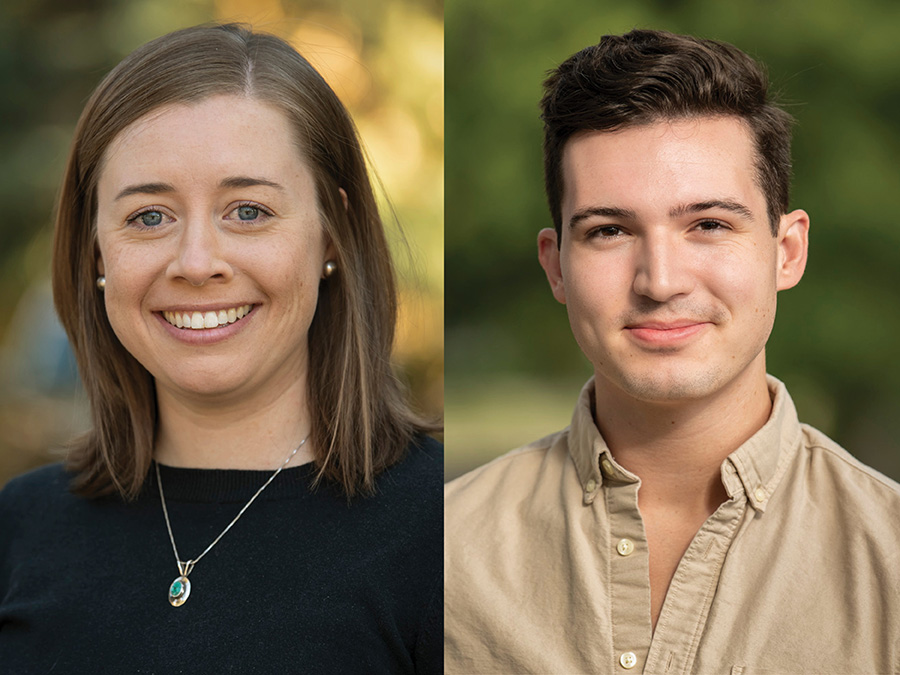News Release

Interview with New Legacy Design Leadership
Posted 8/29/2022
DW Legacy Design® represents our commitment to design projects that outlast us and contribute to a healthier world. Doing this requires designs that are environmentally sensitive, community supported, economically viable, and artfully executed. Today, we talk to our newly appointed leaders of DW Legacy Design, Meg Plumb, Director, and Beau Burris, Manager, about what Legacy Design means to them and what they see for its future.
In your own words, what is Legacy Design?
Meg: It is a framework of design thinking that encompasses DW’s design methodology and our design documentation. It forces us to iterate, innovate and collaborate by giving us the vital tools to communicate, document and execute our design and planning work. Legacy Design unifies our eight offices through a set of guiding principles and resources that guide our teams through a rigorous creative process and conscientious client services.
Beau: Legacy Design is a compass for our work at Design Workshop. It is our true north and ensures that we, as a studio, share the same design philosophy, work ethic and direction. Legacy Design is also about cultivating an authentic studio culture where everyone’s voice is heard. It’s bringing all the ideas to the table during design reviews and ensuring everyone contributes to the process. Finally, Legacy Design creates a new platform for learning opportunities to elevate us as individuals and as a firm so we can continue to produce incredible work for our clients.
Beau, tell us about the four categories that Design Workshop uses to develop a sustainable project?
Beau: The four areas – or rings as we refer to them in the studio—are community, art, environment and economics. They serve as a compass to ensure a project’s overall direction aligns with the needs of all constituents, from clients to the project’s future users. When all four rings align, it means that the project is symbiotic with its context and ideally self-sustaining to a degree. The project will serve to strengthen the community, provide the world artistic beauty, enhance local habitats and biodiversity and be economically viable.
Meg, can you provide an example of a recent Design Workshop project that exemplifies Legacy Design in action?
Meg: What is most powerful about the Legacy Design guiding principles is that they apply on a range of project types and scales. Last summer, we completed the reconstruction of the historic Marble Garden sculpture at the Aspen Institute. We had the opportunity to collaborate with art curators, stone specialists, local historic preservation officers and talented contractors to reconstruct the concrete components of the sculpture that were crumbling, while preserving the iconic marble pieces. It was a tiny project, when you look at its scale, but our process was guided by environment, community, art and economics. In contrast to this project, you look at the large parks and recreation master plans my colleagues are leading. They are also applying these categories at a regional scale and asking different critical questions -- but all guided by the same Legacy Design framework.
What is the biggest opportunity and challenge you foresee in this role?
Meg: Expanding collaborative opportunities is a huge opportunity for us. Every member of our firm is key to the Legacy Design process so finding new ways to integrate all voices is only going to help us grow. We must be self-critical and ask the hard questions. I look forward to the challenge of leading the DW team to examine our own processes and perspectives to ensure our work is addressing our client’s and community’s needs while also serving under-served populations and working to combat environmental degradation.
Beau: The ability to shape the future of Design Workshop is the biggest opportunity we have: there is no name on the door of our office. We are a democratic firm and Legacy Design provides the opportunity to elevate every voice. I am thrilled to help steer the firm in an impactful way. It will be challenging, and I expect failure along the way, but challenges are how we will grow as we all work together to reimagine DW Legacy Design® to continue to be relevant into the future.
What do you hope to accomplish in your first year? Five years?
Meg: In my first year, I look forward to connecting with each office and serving as a mentor of our Legacy Design methodology. I have great optimism for the positive impact that our profession can make on this world. I look forward to expanding DW’s design research and advocacy efforts while leading the conversation about how our work is advancing climate resilience, DEI metrics and community health.
Beau: I want to focus on gaining an understanding of how employees view Legacy Design and where they want to see it grow. Together, we will refine how we talk about it so that there is firmwide alignment. I want Legacy Design to feel like an intrinsic part of our process rather than an extra task. In five years, I hope we see the direct impact of our Legacy Design work with all employees and the firm overall. Ideally, research and innovation are making palpable improvements to our process, members of the firm feel that their growth is supported, and our projects continue to make big, impactful change.